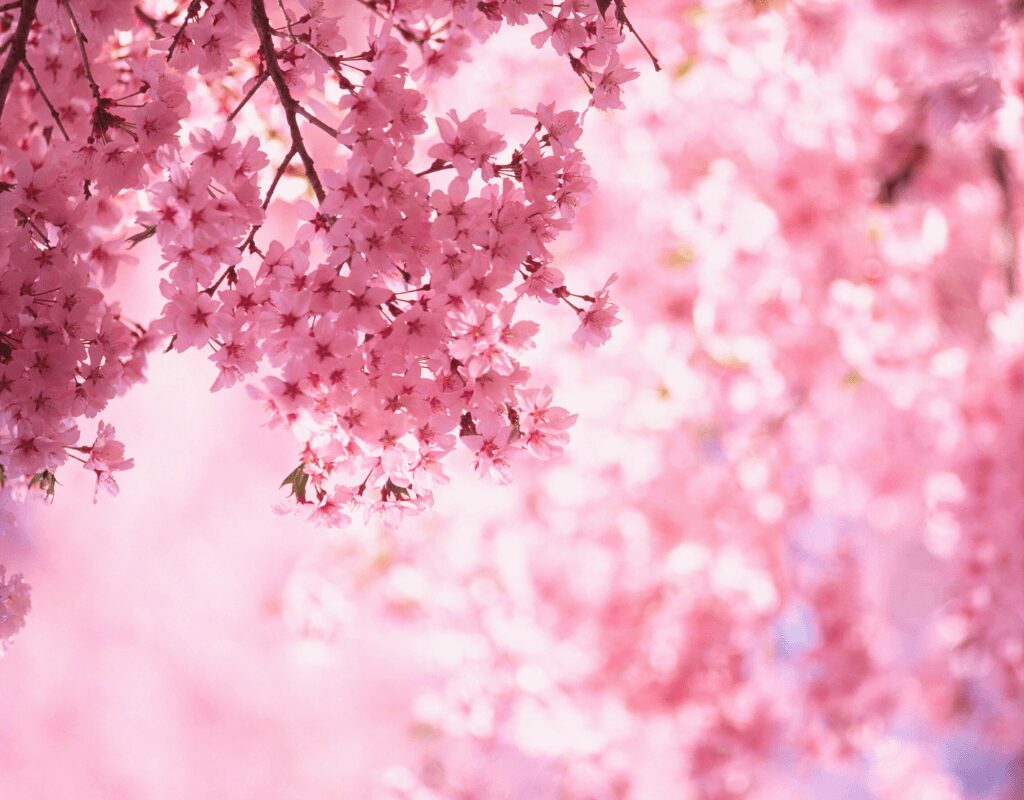- May 22, 2025
- No Comments
The Hanami is a popular Japanese tradition that celebrates the beauty of cherry blossoms in spring. People gather under blooming sakura trees to enjoy nature, spend time with family and friends, and appreciate the short-lived beauty of the blossoms. Whether you’re having a hanami picnic in the park or enjoying night cherry blossoms, the festival brings everyone together in a joyful and peaceful way. This guide will show you all about the Hanami and how to enjoy it to the fullest.
For the latest sakura forecast, please check the following article.
Related Post
Table of Contents
Chapter 1: What is Hanami?

Hanami is a traditional Japanese festival that celebrates the beauty of cherry blossoms. It is written as 花見 in Japanese. The word “hanami” means “flower viewing” and refers to gathering under blooming cherry trees to enjoy them. The festival takes place in spring, usually from late March to early April, depending on the location and weather.
Since cherry blossoms are an important part of Japanese culture, it is common to enjoy hanami in spring. People often gather with family and friends in parks or famous cherry blossom spots. Some places also hold light-up events, allowing visitors to enjoy “yozakura” (nighttime cherry blossom viewing).
Related Post
Chapter 2: The History of Hanami
Hanami began in the Heian period (794–1185) when nobles gathered under cherry trees to write poems and play kemari, a traditional ball game.
Later, farmers held feasts under the blossoms to pray for a good harvest. During the Edo period (1603–1868), the eighth shogun, Tokugawa Yoshimune, encouraged common people to enjoy cherry blossom viewing, making hanami a popular tradition for everyone.
Chapter 3: Customs of Hanami
Hanami isn’t just about admiring cherry blossoms—it’s also about enjoying food, drinks, and time with others. Here are some common customs:
- Bashyotori (場所取り) – People arrive early to secure a good spot under the cherry trees. In popular locations, some even reserve spaces hours or days in advance by spreading out picnic mats.
- Ohanami Bento (お花見弁当) – Many bring special hanami bento, which are lunchboxes filled with seasonal foods like onigiri (rice balls), tempura, and colorful side dishes. Some also enjoy traditional snacks and sweets made with cherry blossoms.
- Yozakura (夜桜) – Many people enjoy hanami not just during the day but also at night. Parks and famous cherry blossom spots often light up the trees, creating a magical atmosphere. Yozakura, or nighttime cherry blossom viewing, offers a unique and beautiful experience.
Related Post

Chapter 4: Essential Items for Hanami
To enjoy hanami comfortably, bringing the right items is important. Here are some essentials:
Picnic Sheet
A large sheet or mat (called “レジャーシート” in Japanese) keeps everyone comfortable while sitting on the ground. Popular hanami spots can get crowded, so a big enough mat is useful.
This leisure sheet is for 3 to 5 people. Japanese spring often has a lot of rain, but this sheet is waterproof. The underside is made of aluminum, which helps prevent moisture and cold. It’s also machine washable, making it a convenient item to have.
Size: 200 x 200 cm
Weight: 1000 g
Storage Size: 18 x 36 cm
If you want to minimize your luggage, the Odoland sheet is a great option. The 1-2 person size measures 110 x 160 cm, and when folded, it becomes as small as 8 x 12 cm. It’s also very lightweight, weighing only 120 g.
Size: 110 x 60 cm
Weight: 120 g
Storage Size: 8 x 12 cm
Insulated Bag
An insulated bag is called “保冷バッグ” in Japanese. It keeps drinks and bento fresh. In Japan, spring temperatures can rise above 20°C during the day and suddenly drop in the evening. To prevent food from spoiling, an insulated bag is recommended.
Thermos offers a lightweight fabric bag that is foldable after use. It weighs only 300 g, making it easy to carry while still maintaining cooling effects.
Size: 32 x 30 x 9 cm
Weight: 300 g
If you have a large group, carrying a heavy bag can be difficult. A rolling insulated bag might be a better option. It holds 26 liters and has a capacity of approximately two days’ worth of storage. It’s not only great for hanami but also useful for camping and other outdoor activities.
Size: 49 x 34 x 42 cm
Weight: 3.3kg
Trash Bags
Cleaning up after hanami is important, as most parks require visitors to take their trash home. Please bring a trash bag with you and help keep the park clean.
Folding Table
If you are driving to a hanami spot, bringing a table and chairs can make your experience more comfortable. A folding set is especially useful because it’s easy to store at home when not in use and can also be used on a balcony.
The Fieldoor table has adjustable heights of 70 cm and 40 cm. Use the higher setting (70 cm) when sitting on a chair and the lower setting (40 cm) when sitting on a leisure sheet. It has a waterproof surface, and the frame is designed to resist rust. The built-in handle makes it easy to carry. It also comes with folding chairs.
Table: Approx. W90 cm x D66 cm x H70 cm / 40 cm
Bench: Approx. W87 cm x D25 cm x H40 cm
Folding Size: Approx. W90 cm x D33 cm x H10 cm
Weight: Approx. 9.6 kg
* When you purchase products introduced in the content, a portion of the sales may be returned to belongingJAPAN.
*Please note that there may be changes in availability or pricing. The prices listed above are as of February 28th, 2025. For further details, please check Amazon.co.jp.


